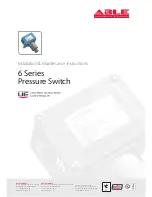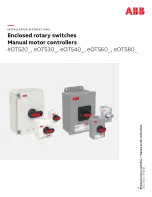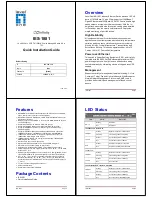
Table 231: Spanning Tree CST Port Fields (continued)
Field
Description
Admin Edge Port
Select this option administratively configure the interface as an edge port. An
edge port is an interface that is directly connected to a host and is not at risk of
causing a loop.
Auto-calculate Port Path Cost
Shows whether the path cost from the port to the root bridge is automatically
determined by the speed of the interface (Enabled) or configured manually
(Disabled).
Hello Timer
The amount of time the port waits between sending hello BPDUs.
External Port Path Cost
The cost of the path from the port to the CIST root. This value becomes
important when the network includes multiple regions.
Auto-calculate External Port
Path Cost
Shows whether the path cost from the port to the CIST root is automatically
determined by the speed of the interface (Enabled) or configured manually
(Disabled).
BPDU Flood
This option determines the behavior of the interface if STP is disabled on the
port and the port receives a BPDU. If BPDU flooding is enabled, the port will
flood the received BPDU to all the ports on the switch that are similarly disabled
for spanning tree.
BPDU Guard Effect
Shows the status of BPDU Guard Effect on the interface. When enabled, BPDU
Guard Effect can disable edge ports that receive BPDU packets. This prevents a
new device from entering the existing STP topology. Thus devices that were
originally not a part of STP are not allowed to influence the STP topology.
Port ID
A unique value that is automatically generated based on the port priority value
and the interface index.
Port Up Time Since Counters
Last Cleared
The amount of time that the port has been up since the counters were cleared.
Port Mode
The administrative mode of spanning tree on the port.
Designated Root
The bridge ID of the root bridge for the CST.
Designated Cost
The path cost offered to the LAN by the designated port.
Designated Bridge
The bridge ID of the bridge with the designated port.
Designated Port
The port ID of the designated port.
Topology Change
Acknowledge
Whether the next BPDU to be transmitted for this port will have the topology
change acknowledgement flag set.
Auto Edge
When enabled, Auto Edge allows the interface to become an edge port if it does
not receive any BPDUs within a given amount of time.
Edge Port
Whether the interface is configured as an edge port (Enabled).
Point-to-point MAC
Whether the link type for the interface is a point-to-point link.
Root Guard
When enabled, Root Guard allows the interface to discard any superior
information it receives to protect the root of the device from changing. The port
gets put into discarding state and does not forward any frames.
Loop Guard
When enabled, Loop Guard prevents an interface from erroneously transitioning
from blocking state to forwarding when the interface stops receiving BPDUs. The
port is marked as being in loop-inconsistent state. In this state, the interface does
not forward frames.
Configuring Switching Information
ExtremeSwitching 200 Series: Administration Guide
228
















































